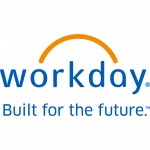This post is an excerpt from GovLoop’s recent guide, “IT Modernization in State and Local Government.”
With IT modernization being a hot buzzword in government, many agencies and departments are in a rush to modernize any time an opportunity opens up. This results in many organizations falling into the trap of using separate technology solutions for each of their issues. But relying on siloed technologies for important mission-related tasks like managing workforce and talent can lead to serious inefficiencies.
“Over the years, with things concerning talent management, recruiting and HR management, government kept adding standalone solutions,” Sherry Amos, Director of Market Development, Education and Government at Workday, said in an interview with GovLoop. “Not only have these IT solutions become unwieldy and expensive, they also prevent the agency from using the data that sits in each of those disparate systems, affecting true decision-making.”
This is a particularly critical time for HR professionals in government because a wave of employees are about to retire from state and local workforces. HR professionals face questions like: How are we going to build, recruit and train people for the workforce? How will we transfer knowledge from the exiting workforce? How will we develop leadership and succession talent in time?
Amos said the answer is through cloud solutions that allow you to predict your workforce and proactively source talent. That’s why state and local agencies are looking into cloud shared services. Cloud solutions through shared services over modular, interoperable applications that can provide common administrative functions across service areas.
Amos discussed how cloud and shared services can help state and local agencies unify their siloed IT solutions and fully harness the benefits of modernization for their talent management and HR needs. “Shared services within and across the government enterprise are improving organizational, manager and employee productivity,” she said.
As a whole, the HR community has benefited from the government’s gradual adoption of cloud technologies, which gained steam with initiatives like the Cloud First policy. It required agencies to show a preference toward cloud solutions when launching new IT projects.
“HR was actually one of the applications that was an early mover to the cloud,” Amos said. “If the solution is available in the cloud, agencies now realize they can’t continue to manage everything on premise. They don’t have the IT resources, and it’s difficult to keep up with security and modern technologies.”
Additionally, HR specialists are often bogged down with transaction-based tasks like payroll that are now being automated. Amos said cloud and shared services can streamline these tasks and benefit HR departments in four key ways:
1. Better view of overall workforce:
“Full-suite integration across solutions and one capability produce a true 360-degree view of your workforce.”
2. More time to focus on strategic work:
Through automated processes and an integrated system, “HR professionals can go from spending 80 percent of their time on transactions and only 20 percent on strategic activities to completely flipping that around.”
3. Embedded analytics for better decision- making:
Shared services provide “integrated and embedded analytics, giving managers real-time data when they need it to drive strategic decision-making.”
4. Ease of use:
Another benefit of shared services is existing employees can become proficient with standard tools and processes and don’t have to be trained on new systems if they transition to a different part of the organization. “Many are now able to go from a highly decentralized model of having HR professionals in every part of an agency to centralizing certain functions.”
Ultimately, Amos said agencies need to harness what Workday calls “the power of one.” That’s managing your agency or department’s needs through one technology and one architecture.
“When you have one solution, you have one current vision,” Amos said. “You have one set of business processes. On top of that, you have user-friendly interfaces with mobile capabilities. Those are built right into the business processes, not as add-ons.”
As state and local HR professionals face the impending exodus of seasoned employees, they’ll need to harness the best of IT modernization to expedite tedious hiring and recruiting processes and improve efficiencies. Cloud solutions and shared services can help HR managers and employees alike leverage one solution for myriad workforce needs.
Read the rest of the IT modernization guide, here.






Leave a Reply
You must be logged in to post a comment.